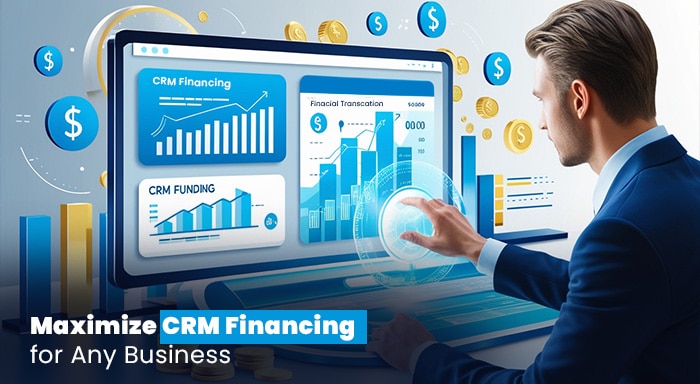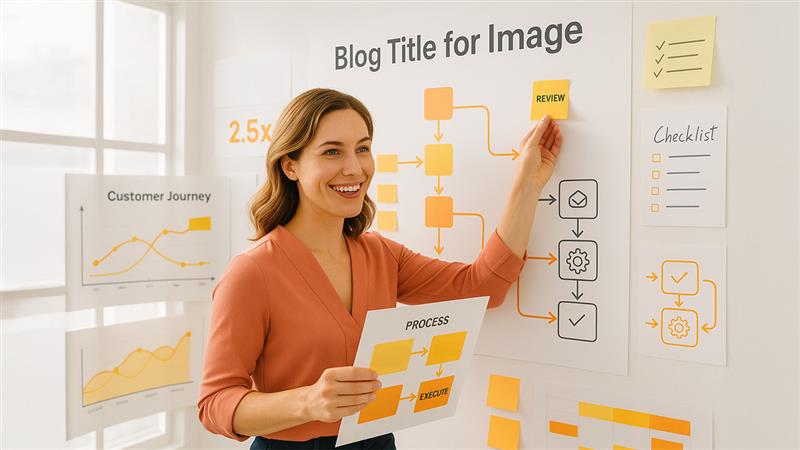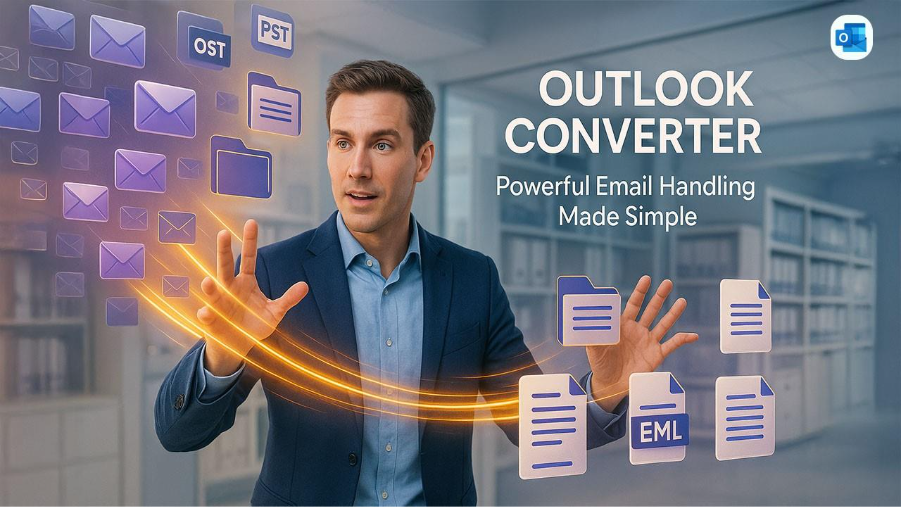Not all companies can boast an impeccable internal organization. An important document can get lost, employees can forget to call a client or spend a lot of time searching for the right information. Everything is difficult when analyzing customer history - it's a weak spot for almost everyone, as Olivia Mitchell, a financial expert at Mangolia Loans, points out. “Not everyone thinks to analyze dialogs, purchase history, and look for an individual approach to everyone, and those who do, spend time collecting information, analyzing, and providing statistics. That's exactly what CRM systems are for.”
But let's be honest: implementing a CRM system is not cheap. Many companies, especially small ones, fear such costs and postpone this decision “for later.” And for nothing! Today, you can use different CRM-financing methods, which will help you implement the necessary tools without large costs at the start, and every invested dollar will bring benefits.
The Importance of CRM
CRM is a customer relationship management system that helps automate sales, build a customer base, and establish proper communication. CRM systems handle the main routine tasks, making business operations simpler and more convenient. For example, a manager does not need to remember when to call a client back—the system will remind him.
CRM also accumulates, structures, and analyzes information about the consumer: contacts, purchase history, average price, and other data. This tool allows both business owners and their employees to analyze and use this data to create a detailed profile of each buyer. This detailed report will help to improve communication and maintain a healthy relationship with them. CRM for investment also reduces the risk of errors due to carelessness.
The capabilities of CRM systems have no limit. Here are some key advantages:
- collecting a customer base by automatically creating customer profiles;
- storing the history of communication and interaction with customers;
- combining different communication channels into one interface;
- identifying and minimizing business weaknesses;
- analyzing the company's work;
- planning and optimization of employee working hours;
- accelerating the processing time of applications;
- increasing sales;
- increasing loyalty and audience growth;
- improving service quality;
- removing some of the responsibilities from managers;
- reducing the number of errors due to human factors.
A study shows up to 74% of companies signify that CRM systems help them optimize the existing processes that directly affect the growth and profitability of the business. This is particularly beneficial when it comes to integrating business operations with CRM systems.
Understanding the Costs of CRM
Here’s a breakdown of the key expenses:
Subscription Fees
Basic CRM pricing per user can range from $12–$30 per month. This plan offers a package of contact management features and basic reporting.
Advanced CRM plans start at $100 or more per month per user. This plan offers more premium features such as advanced analytics, automation tools, and AI capabilities. Enterprise CRM is the most expensive, and the price per user can reach or exceed $300.
Implementation Costs
Setting up a CRM consists of data migration, system setup, and integration. For small and medium businesses, a basic setup will cost $5,000–$15,000. For large-scale businesses and organizations, the cost can exceed $100,000 or more. The fluctuation in the pricing depends on the complexity of the systems and the number of users involved.
Training and Onboarding
To help your team understand CRM, they need training. Basic training sessions cost around $500–$2,000. However, the custom training program tailored for individual requirements can range from $5000 to $20,000, especially for larger teams.
Maintenance and Updates
Most CRMs include regular updates with your subscription. However, major upgrades or new features can cost between $500 and $5,000 annually. Some CRMs also offer premium support, which can add $100 to $500/month to your subscription.
Customization and Add-ons
If your CRM doesn’t have enough features, any add-ons will cost money. Email marketing tools or additional integrations can cost anywhere from $50 to $300 per month. These integrations and additional custom features can cost a range from $5000 to $50,000 and even more.
Scalability
As your business grows, you may need to upgrade your CRM plan or add more users. Adding users could cost an additional $12-$300 per user/month, depending on the plan. Upgrading to an enterprise-level plan for large teams could push costs to $20,000-$100,000 yearly or more, depending on features and user count.
Financing Options for Your CRM Investment
As it became clear, implementing CRM in business is not cheap. Although there are several financing options available that help businesses manage their expenses.
Business Loans
Business loans are one of the most common ways to finance a CRM system. Many banks and online lenders offer small business loans with competitive interest rates. These loans give you the funds needed for CRM software without draining the cash reserves. Depending on your business history and account’s credit score, you may be eligible for a loan with a fixed interest rate and a term of 1 to 5 years. Repayments are typically made monthly, making this option predictable.
Example: A loan for $10,000 at 6% interest over 3 years would result in monthly payments of approximately $304. This option helps businesses to repay the cost over time, which reduces the immediate financial impact.
Leasing Options
Leasing could be attractive if you prefer to avoid the upfront cost of purchasing a CRM system. With leasing, you pay a monthly fee for using the software without owning it.
Leasing offers various benefits, including bundling upgrades, maintenance, and technical support in the payment process, which ensures you always have access to the latest features without paying extra cost.
Leasing is a perfect option for businesses that value flexibility. You can often purchase the CRM or renew the lease at the end of the lease term.
SaaS (Software-as-a-Service) Payment Plans
Today, many CRM systems rely on SaaS models for streamlining the payment process. With SaaS, businesses pay a subscription fee instead of purchasing software outright. This payment model offers a lower initial cost, with monthly or annual subscriptions that can be scaled based on the number of users or the level of functionality needed.
Example: Outright Store, a popular CRM provider, offers monthly subscription plans starting from $175 per user. These plans offer powerful CRM features to businesses by eliminating the need for large investments.
Government Grants and Programs
Depending on your business type and location, you may be eligible for government grants or low-interest loans to help fund CRM systems. Many government firms support small businesses, modern technology adoption, and undergoing digital transformation by providing incentives. This fund can reduce the total amount of CRM systems and allow you to spend on more productive financial alternatives.
Tip: Check the latest programs with local business development organizations or government websites.
Vendor Financing
Some CRM providers offer financing options, allowing businesses to pay for the software over time. These programs offer funding at a low interest rates or without interest for a fixed period, making it easier to manage their cash flow while benefiting from the CRM systems. Additionally, vendor financing options can also offer some extra benefits, like increased support packages and discounts for early repayments.
Credit Cards
While not always the best option due to high interest rates, using a business credit card for your CRM purchase can be a quick solution if you need immediate access to funds. Many credit cards offer a 0% introductory APR for a limited time, which can be beneficial if you plan to pay off the balance quickly.
Caution: Be mindful of the interest rates after the introductory period. Having a solid plan to pay the balance before the rates increase is very crucial for businesses.
Crowdfunding or Investor Funding
For startups or businesses looking to scale rapidly, crowdfunding or seeking an investor might be viable options. Platforms like Kickstarter or GoFundMe allow you to raise money from individual backers in exchange for rewards or equity. For this purpose, find an investor who can offer you the required funds for investing in CRM systems and other business expenses.
Tip: Crowdfunding is the best option for you if you have an attractive business case and you can also offer exciting rewards to potential backers.
How to Choose a CRM?
For investments in a CRM system to pay off, it is important to choose it correctly. In addition to the fact that CRM comes in different types (operational, analytical, combined, and others), they have other features that need to be taken into account. For example, a CRM for financial services should include tools for managing client portfolios, tracking investments, and ensuring financial compliance. Look for niche systems that will consider your field's specifics. And for a trading business, such as online stores, universal CRMs are suitable.
If you have a large business with its requests, then you should consider creating a CRM from scratch. The CRM developers will create the systems tailored to your requirements and you will receive a unique an customised product. It is an expensive approach, So before implementing, make sure it is affordable for you or not. Most companies choose ready-made solutions; they are much cheaper, solve almost any problem, and do not require modifications.
It is also important to determine how the CRM will be launched. Cloud CRM systems are the most common, storing data on the provider's servers. Users pay a regular subscription.The features of accessibility from anywhere with an internet connection makes these solutions flexible and convenient. Unlike cloud-based ones, boxed CRM systems require a one-time purchase of a license, after which the program is installed on employees' computers and runs on the company's server.
It is also worth paying attention to other aspects of the CRM system:
- the number of integrations with services and programs that you use in your work;
- what sales functions are available, and do you need to pay separately for their connection;
- is there a fee for additional users;
- scalability to meet the growing needs of your business;
- simple and clear interface - use a trial subscription to evaluate how easy it is to work in the system;
- the ability to analyze data and create various reports in the CRM for effective decision-making in business;
- mobility - Does the CRM system have an adapted mobile version.
Mistakes to Avoid When Financing a CRM
To ensure that your CRM systems are effective and profitable, you need to avoid the following mistakes:
Ignoring the Total Cost
When choosing a CRM, consider its price and hidden costs, such as employee training, technical support, updates, and integration with other systems. These costs can account for up to 30% of the total cost of implementing the system.
Choosing the Wrong System
Not all CRMs are equally good for all types of businesses. For example, a system for a large company may be complex and expensive for a small business. Determine your needs: if you have a small company, consider a CRM with a basic set of functions, and if you plan to grow, choose flexible solutions that can expand.
Strict Financing Terms
Make sure that the terms of the loan or lease are flexible. Some banks offer the option of early loan repayment without penalties, saving you up to 10% of the total amount. Evaluate whether leasing, credit, or subscription is more profitable for your business.
No Implementation Plan
The CRM system may not reach its full potential without a clear implementation plan. Create a plan with specific stages and deadlines: system setup — 1-2 weeks, employee training — up to 2 weeks, integration with other tools — 3-4 weeks.
Ignoring Business Growth
Don't choose a system that can't scale. Choose a CRM system that supports adding new users and features if you are planning to expand your business. For example, some systems allow you to add additional modules or integrations for an additional fee.
Not Having Technical Support
When choosing a CRM, ensure the provider offers reliable technical support with a guaranteed response time (for example, within 24 hours). Support can prevent several days of downtime if the system has problems.
Not Using All Features
It is important to use all its features to get the most out of your CRM. For example, sales automation can increase efficiency by 20-30%, and analytics can help you make more accurate decisions and save up to 15% on marketing costs.
Unrealistic Expectations
Don't expect instant results. A CRM system takes time to implement and adapt. Expect the first visible results to appear no earlier than in 3-6 months, depending on the size of the business and the system's complexity.
Final Thought
A CRM system is essential for providing high-quality customer service and ensuring the proper organization of business operations. By integrating business operations with CRM strategies, you can strengthen customer loyalty and boost business growth. Integrating business and CRM strategies will increase user loyalty and drive sales growth. With a well-organized customer database, detailed analytical reports, and other CRM tools, you can unlock the new growth opportunities for your business.
Do not delay the implementation of CRM, even if it requires financial investments, because ordinary tables will not be enough for high-quality interaction with clients. Get used to doing business correctly with CRM right away.



